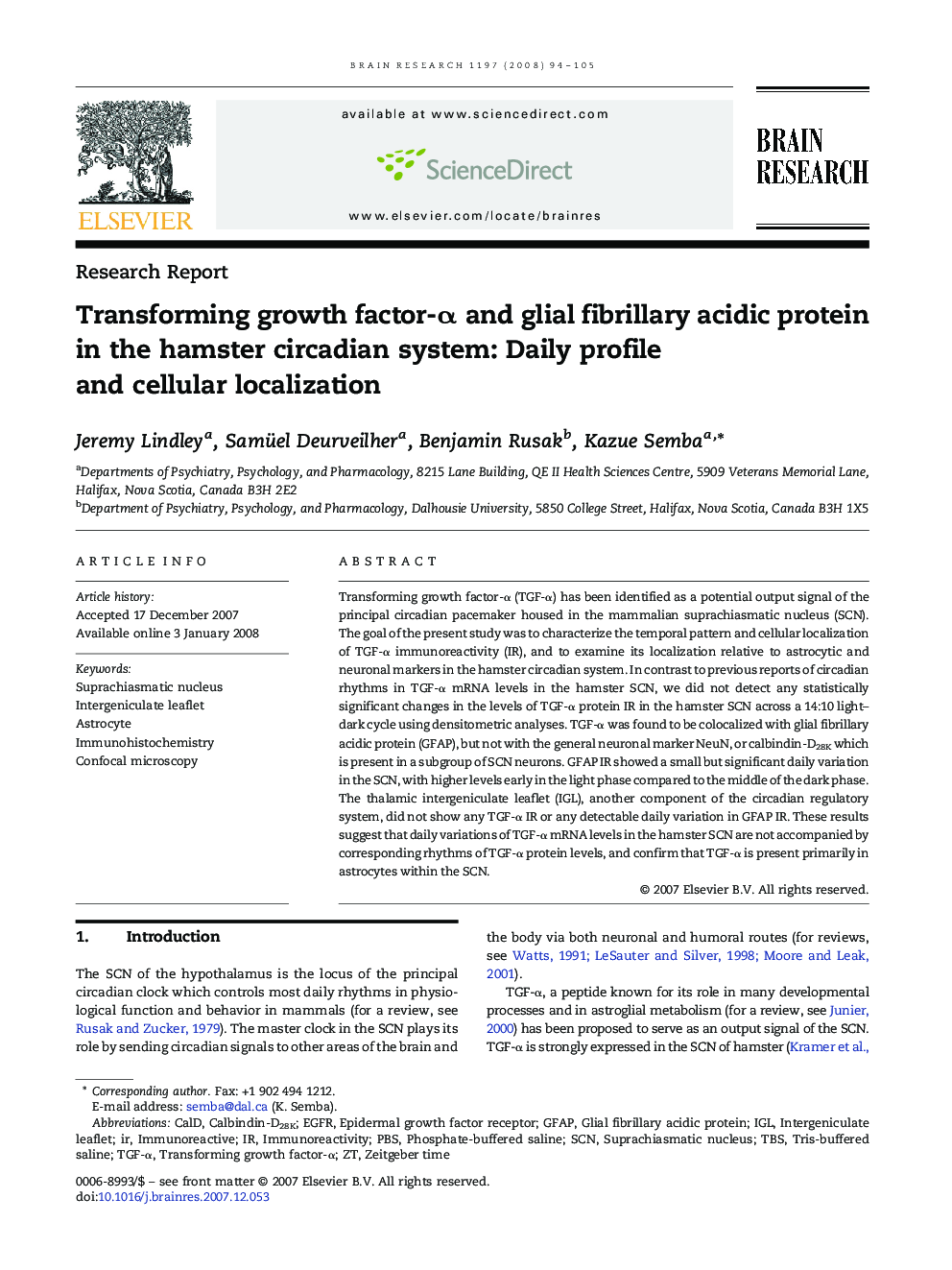| Article ID | Journal | Published Year | Pages | File Type |
|---|---|---|---|---|
| 4330054 | Brain Research | 2008 | 12 Pages |
Transforming growth factor-α (TGF-α) has been identified as a potential output signal of the principal circadian pacemaker housed in the mammalian suprachiasmatic nucleus (SCN). The goal of the present study was to characterize the temporal pattern and cellular localization of TGF-α immunoreactivity (IR), and to examine its localization relative to astrocytic and neuronal markers in the hamster circadian system. In contrast to previous reports of circadian rhythms in TGF-α mRNA levels in the hamster SCN, we did not detect any statistically significant changes in the levels of TGF-α protein IR in the hamster SCN across a 14:10 light–dark cycle using densitometric analyses. TGF-α was found to be colocalized with glial fibrillary acidic protein (GFAP), but not with the general neuronal marker NeuN, or calbindin-D28K which is present in a subgroup of SCN neurons. GFAP IR showed a small but significant daily variation in the SCN, with higher levels early in the light phase compared to the middle of the dark phase. The thalamic intergeniculate leaflet (IGL), another component of the circadian regulatory system, did not show any TGF-α IR or any detectable daily variation in GFAP IR. These results suggest that daily variations of TGF-α mRNA levels in the hamster SCN are not accompanied by corresponding rhythms of TGF-α protein levels, and confirm that TGF-α is present primarily in astrocytes within the SCN.
